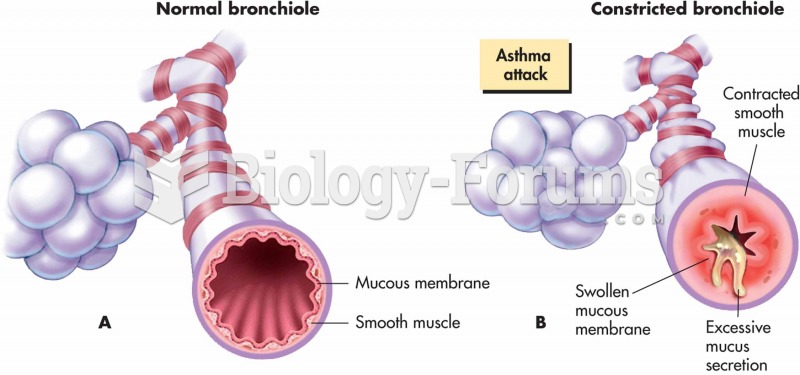This topic contains a solution. Click here to go to the answer
|
|
|
Did you know?
The most dangerous mercury compound, dimethyl mercury, is so toxic that even a few microliters spilled on the skin can cause death. Mercury has been shown to accumulate in higher amounts in the following types of fish than other types: swordfish, shark, mackerel, tilefish, crab, and tuna.
Did you know?
The average adult has about 21 square feet of skin.
Did you know?
The average office desk has 400 times more bacteria on it than a toilet.
Did you know?
Asthma cases in Americans are about 75% higher today than they were in 1980.
Did you know?
As many as 20% of Americans have been infected by the fungus known as Histoplasmosis. While most people are asymptomatic or only have slight symptoms, infection can progress to a rapid and potentially fatal superinfection.







